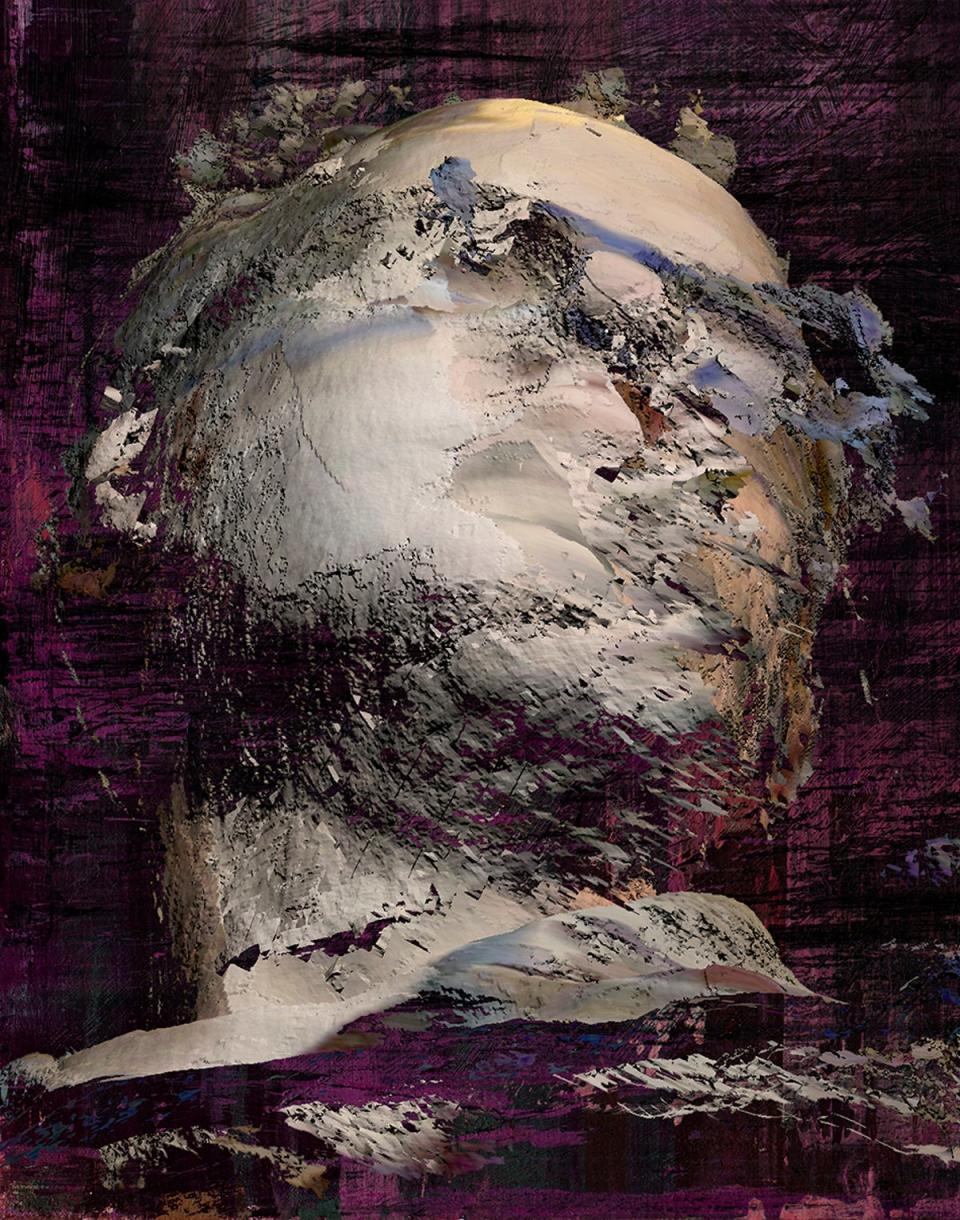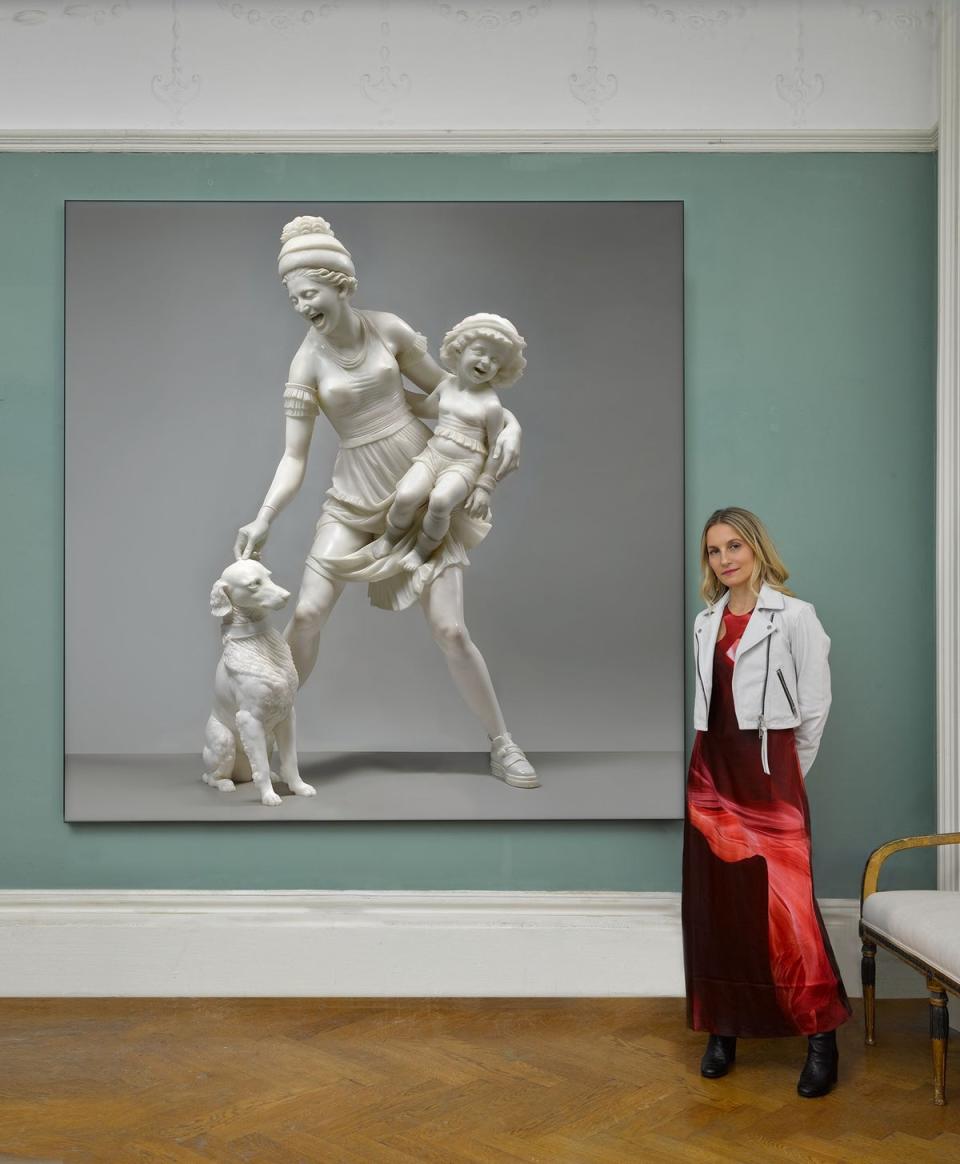The AI & Technology Influence on Contemporary Art exhibition opening today in London explores the impact of technology on contemporary artists, especially painters, revealing how AI has shaped and challenged their creative processes while sparking deep dialogues about its implications. In the exhibition, established artists Jonathan Yeo, Von Wolfe and Henry Hudson have embraced AI and technology to redefine the essence of a new series of works, seamlessly integrating artificial intelligence and advanced technologies.
Through these groundbreaking works, they explore and navigate the complex relationship between humanity and machines, prompting a reevaluation of the future of art. They probe the limits of AI’s ability to expand or limit artistic expression, and explore questions of identity, development, authorship, authenticity, originality and reality.
Jonathan Yeo’s exploration of the power dynamics between humans and technology evokes a strategic chess game, the outcome of which remains uncertain. Known for his radical approach to portraiture, Yeo presents a compelling series that transcends conventional identity. Using 3D scanning technology and AI algorithms to reimagine self-portraits, Yeo’s “Paradox of Progress” blurs the boundaries between the tangible and the virtual and questions the evolution of technology.

Von Wolfe trains AI to cultivate intense psychological stories, expertly arranging and shaping his protagonists. Von Wolfe’s process embodies the seamless interplay between the artist’s practice as an oil painter and the forefront of technological innovation. By striking a balance between intuitive human discernment and an advanced node-based system using diffusion models, the resulting works exhibit astonishing precision.


For Henry Hudson, the concept of AI evokes a sense of hysteria, questioning its limits, our control over it, and whether it ultimately controls us. Hudson combines technology seamlessly in this new series ‘Somewhere in Time’, crossing physical and digital boundaries. His creations serve as a metaphor for the fluidity of existence in the digital age and provoke reflection on the influence of AI on our lives.
The London exhibition is part of a wider trend highlighting the integration of AI into art, such as Refik Anatol’s recent exhibition at the Serpentine and AI: More than Human at the Barbican. The latter offers an unprecedented overview of creative and scientific developments in the field of artificial intelligence.
In New York’s Times Square we witnessed Scott Eaton’s large-scale digital moving image piece ‘Intersections’ on the skyscraper screens. An MIT graduate, creative technologist, and multimedia artist, Eaton is a perfect example of an artist who combines machine learning with other skills such as animation, sculpture, and drawing. The specific piece reflects on the complexity of the digital landscape that defines our existence.
The technique is trained on a custom dataset of 50,000 images, which is then deconstructed into a single QR code, scrambled and remixed through layers of random processes. This custom AI code illustrates the complexity of AI and its potential to be adaptable to an artist’s intentions. It’s not just about the use of AI, but also how we use it to enhance our creative and unique flair.
New media video artist Jake Elwes explores the ethical issues that exist with AI, observing that computer systems “struggle to recognize trans, queer and other marginalized identities”, in a show running until 2024 at the V&A . Other artists like Sougwen Chung use fancy robotics and AI to create drawings and paintings, raising the question of whether the focus is more on the medium or tool itself than the final artwork.
AI was also present at the Venice Biennale this year. French artist Pierre Huyghe’s exhibition Liminal at Pinault Collection looks at AI and the relationship between the human and non-human. In Camata, a film edited in real time by artificial intelligence, a series of machines perform a bizarre ritual on a skeleton of a young man found in Chile’s Atacama Desert.
The trick lies in refining our own stylistic identity, avoiding generic imitation
Pierre Huyghe has long questioned the relationship between the human and the non-human, viewing his works as speculative fictions from which other modalities of the world emerge. For him, fictions are ‘vehicles for accessing the possible or the impossible – what could or could not be’.
In the book How to Speak Machine: Computational Thinking for the Rest of Us, John Maeda, Vice President of Design and Artificial Intelligence at Microsoft, examines the convergence of business, design and technology. John Maeda is also an artist, so I was particularly interested in his point of view.
In his book he brings about a rapprochement between people and our computational creations. As he aptly puts it: ‘Before you can make machines do what you want, you better learn to speak their language’. I argue that teaching machines our language, identity, and distinctive style is critical before they can carry out our desires. As the capabilities of AI and language models increase, understanding their implications, potential and pitfalls becomes increasingly important.
This show – AI & Technology Influence on Contemporary Art – encourages introspection and dialogue: are AI and technology a liberating force for creativity, or do they bring risks, challenging the essence of real ideas in art? These questions linger and invite viewers to embark on a journey of discovery with these visionary artists.
I have personally witnessed artists tailoring the tool to their needs and unique style and discovering a spectrum of new ideas, expanding their range of inspiration. AI is just a tool, a passive companion; in the hands of a mature artist who has already developed a distinctive style and identity, extraordinary things can happen.
Artists must manage their own data and consider its provenance, circumventing the copyright issues associated with the tool’s public availability, all while maintaining moral viability, integrity, and uniqueness. The trick lies in refining our own stylistic identity, avoiding generic imitation. AI must learn from the artist, and the artists must train the tool to understand the artist’s identity and style; without critical engagement and management we risk letting the instrument guide us, rather than the other way around.
AI & Technology Influence on Contemporary Art is curated by Virginia Damtsa. The exhibition opens on May 1 and runs until September 10 at Gabriel Scott, 12 Old Burlington Street, London W1